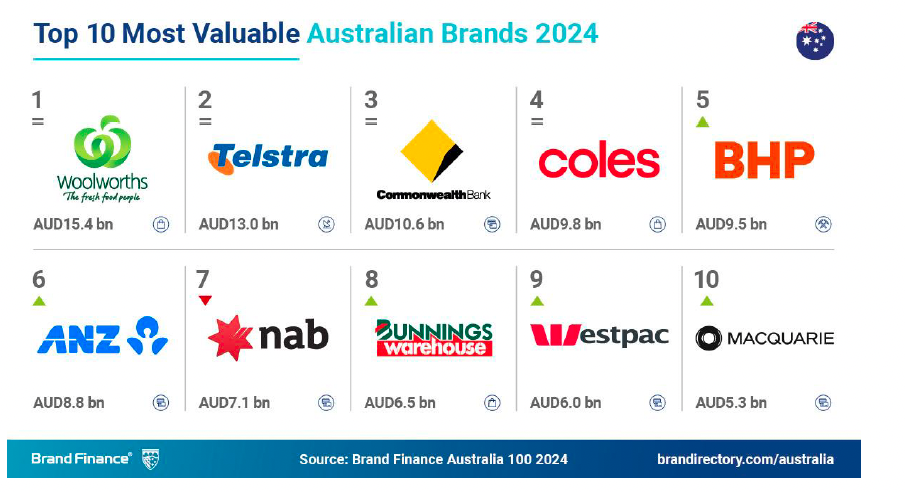Federal budget gets tick for cost-of-living emphasis, but tech, business, retail sectors rue missed opportunities

Industry pundits across the tech, business, retail and services sectors have offered up a mixed bag of opinion on the Federal Budget released last night, applauding the emphasis on cost-of-living relief but criticising the Government for the lack of foresight on further technological advancement and adoption as well as better small business support.
With an emphasis on cost-of-living help and wages growth, top-line inclusions in this year’s Federal Budget are two new tax cuts for every taxpayer; more energy bill relief; increasing wages and reforming non‑compete clauses; more bulk billing, Medicare and health workforce investments; further education spend and student debt relief.
The additional tax costs, to come in 12 months from now, will see the average earner gain $268 in the first year then $536 in their pocket after that as the 16% tax rate is cut to 15% next year, and 14% the year after. The Government is also extending its rebate on electricity bills by six months, with another $150 cut to power bills for households and small business – at a cost of $1.8 billion.
Targeting productivity and workforce flexibility, the Government will ban non-compete clauses for workers earning less than $175,000. According to the Government, non-compete clauses can suppress wages, and are being used across sectors including childcare, construction and hairdressing. The government has also vowed to close loopholes that allow business to fix wages and issue “no poach” agreements.
As was already been intimated prior to this week’s official Budget release, Australian products will benefit from a $20 million investment in “initiatives to encourage consumers to buy Australian-made products”. As United States President Donald Trump prepares to ramp up his tariff campaign on the world, the Government said it is looking for ways to respond that don’t include retaliatory tariffs. The prime minister has spent the past fortnight teasing a “buy Australian” budget measure and in this budget, it’s investing more than $3 billion to support the production of Australian‑made green metals, like aluminium and iron.
The NBN doesn’t miss out either, with $3bn more to fund completion of the network to cover regional Australia – a total of $17.1bn over 10 years for these projects.
Homes are another item, although questions continue to be asked about whether any of these policies will be successful. Labor said it’s striving to make home ownership more affordable for young Australians and young families in particular with a $33 billion plan to help build 1.2 million new homes before the decade is out. This includes $54 million to accelerate the uptake of modern methods of housing construction plus the Help to Buy scheme for first homeowners.
A one-off move to slash student debts by 20 per cent has been funded in the budget at a cost of $738 million over four years, but is subject to legislation being passed. More broadly, education is getting a boost through more funding for public schools, plus a free TAFE program covering jobs expected to be critical to the future.
The Government is also promising a record $8.5 billion to lift bulk billing rates and aimed at improving the health workforce. This should ensure nine out of 10 GP visits should be fully bulk billed by the end of the decade. It’s also reducing the maximum price for a PBS script from $31.60 to $25.
In his budget speech, Treasurer, Jim Chalmers, said the global economy is volatile and unpredictable.
“The 2020s have already seen a global pandemic, global inflation and the threat of a global trade war. The whole world has changed as a consequence,” Chalmers told Parliament. “Tariffs and tensions abroad have been accompanied by storms at home. Ex‑Tropical Cyclone Alfred could wipe a quarter of a percentage point off quarterly growth. North and Far North Queensland have flooded. Storm clouds are gathering in the global economy too. Trade disruptions are rising, China’s growth is slowing, war is still raging in Europe, and a ceasefire in the Middle East is breaking down.
“Treasury expects the global economy to grow 3¼ per cent for the next 3 years – its slowest since the 1990s. It’s already forecasting the 2 biggest economies in the world will slow next year – with risks weighing more heavily on both. Australia is neither uniquely impacted nor immune from these pressures, but we are among the best placed to navigate them.
“We’re emerging from this spike in global inflation in better shape than almost any other advanced economy. Growth is forecast to pick up from 1½ per cent this year to 2½ per cent in 2026–27. The private sector is resuming its rightful place as the main driver of this growth – With Treasury upgrading forecasts for growth in private demand to more than double next year, compared to this one. Unemployment is now projected to peak lower, at 4¼ per cent. Employment and real wage growth this year will be stronger, and participation will stay near its record high for longer.
“Inflation is coming down faster as well. Treasury now expects inflation to be sustainably back in the band 6 months earlier than anticipated. All of this means the soft landing we have been planning and preparing for is looking more and more likely. Because of our collective efforts, the worst is behind us and the economy is now heading in the right direction.”
Shopfully country manager for Australia, Brendan Straw, said it was encouraging to see this year’s Federal Budget acknowledge the very real cost-of-living pressure being felt across the country.
“From rising grocery bills to energy costs and rent, Australians are feeling the pinch in more ways than one. The measures announced from tax relief to energy rebates and cheaper healthcare, are welcome steps toward easing some of that pressure and helping households regain a bit of breathing room,” he said.
“It’s clear that targeted, practical support is essential to help everyday Australians not just get by, but feel a little more secure about what’s ahead. In retail, we’re continuing to see those pressures translate into changing shopping habits. People are seeking out savings more actively, researching deals before they shop, and making more deliberate choices in how and where they spend. Value and convenience are top of mind. For retailers, that means doubling down on clear, compelling offers and making it as easy as possible for shoppers to find what they need at the right price. The right digital tools and smarter engagement strategies will be key to helping retailers stay relevant and connected in what remains a highly cost-conscious environment.”
Small business
Less positive was Australian accounting body, CPA Australia, which accused the Federal Budget authors of lacking vision and ambition, and said small businesses feel ignored. It’s said the Government has failed to deliver initiatives that would improve business productivity, innovation and growth.
“Businesses and their advisers will find little in the federal Budget that will help offset the pain all-too-many small businesses have been experiencing,” CPA Australia Chief Executive Officer Chris Freeland AM said. “The Budget lacks ambition and a thorough understanding of what business needs. Not enough is being done to slash red tape or create the conditions and improve policy development that would shift the dial on Australian productivity and competitiveness.”
Freeland said new personal tax cuts from July 1, 2026, may capture the public’s attention but would fail to really help most Australians. “SMEs – many of which have thin margins – needed a Budget that would significantly alleviate the cost pressures they face every day,” he continued.
“The unrelenting rise in insurance premiums and the burden of utility bills, materials, wages, fuel and various other inflationary pressures are hard to manage.
“Though the emphasis on relieving pressures on household finances was expected, a more business-centric Budget would have benefitted all Australians because small businesses are significant contributors to the economy and job creation.
CPA highlighted the instant asset write-off as a prime example. “It should have been made permanent – but it remains in limbo. Making it permanent would provide the certainty and opportunity businesses need to invest and grow. They cannot make serious long-term financial decisions when the rules could change every year,” Freeland said.
This sentiment was echoed in less strident terms by the Australian Retailers Association. It said it welcomed reducing income tax, providing general cost-of-living support, extending energy bill relief for households and small businesses until the end of 2025, and investing in supply chain resilience, with $17.1 billion in freight efficiency projects.
“We advocated for greater small business support and welcome continued funding for SMB digital transformation and cybersecurity capability. We will continue to push for the instant asset write-off to be made permanent, and for the threshold to be increased,” the ARA stated. “Despite these measures, the lack of direct support for business and productivity growth remains a missed opportunity, and we will continue advocating for further measures in the months ahead.”
The Budget also lacked support or incentives to help small businesses innovate and adopt new technologies, Freeland said. As research from CPA Australia released on Monday shows, Australian small businesses trail most countries in the Asia-Pacific region in these areas, and are ultimately less likely to experience growth.
“The business community expects the government and Opposition will announce measures during the upcoming election campaign that would significantly reform regulation, taxes and incentives,” Freeland said.
Tech sector
The tech sector response was more mixed bag. Tech Council of Australia (TCA) supported the range of initiatives announced in the Budget to grow skills, and to support the development of energy technology to advance Australia’s economic growth. But was disappointed that no explicit tech sector investment was included in the package of budget measures.
“This is a missed opportunity to build our national competitiveness – at a time of domestic productivity decline, and of critical global trade volatility,” it stated.
“Technology investment complements the Government’s Future Made In Australia (FMIA), training and education programs, which reflect a welcome focus on building sovereign industry capability. We encourage the Government and the Opposition to formalise their support of our Tech Investment Target: to expand both R&D investment and technology adoption to comprise 4.6% of Australia’s share of GDP within the next decade. There are several Budget measures – including training and business cost-relief – that contribute to this goal.”
The ACS, the professional association for Australia’s technology sector, welcomed the Federal Government’s 2025 Budget tax cuts that will benefit thousands of professionals in the technology and computing sectors. The tax relief measures, introduced as part of the 2025–26 Budget, will provide financial relief to IT specialists, software engineers, cybersecurity experts, and other digital professionals who are integral to Australia’s innovation-driven economy.
“As the Australian digital economy grows, ensuring ICT professionals are fairly supported financially is critical. These measures will enable tech professionals to invest more in their careers, upskill, and contribute to Australia’s growing technology sector,” ACS Chief Executive Officer, Josh Griggs, said.
“However, ACS is concerned that the nation is not positioning itself to take advantage of the major changes artificial intelligence offers to the economy. We would like to see greater government investment and incentives for the private sector that would see increased funding for developing skills, investing in local data centres, boosting AI sovereignty, and bolstering Australia’s cyber security readiness, particularly in the small to medium enterprise sector.”
– with additional reporting by Nadia Cameron.





